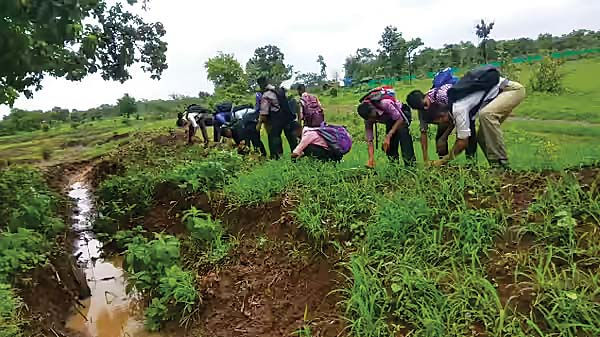Abeer’s Dream and the Plastic Planet
- Dr. Sanjay Joshi

- Nov 7
- 3 min read
We might one day see our planet wrapped in what looks like a massive plastic bag.

One morning, my nine-year-old grandson, Abeer, woke up from a frightening dream. He was trembling, his face pale with fear. After soothing him for a while, we gently asked what had happened.
Taking a deep breath, he gathered his courage and began to recount his dream. He said he saw himself walking along a beach in Goa with his parents. The sun was shining, the waves lapping gently against the shore—until, quite suddenly, a giant wave rose from the sea and swept him away.
At first, he was terrified and confused, unable to make sense of what was happening. But after a few moments, the wave seemed to calm down—and then, strangely, it began to speak to him. To his amazement, he realised he could breathe normally underwater. It was as though the sea itself wanted to tell him something, to share its sorrow.
As his fear slowly faded, Abeer began to look around. What he saw next was heartbreaking. The water was choked with countless pieces of plastic—bottles, bags, wrappers, nets—all swirling around him in a vast whirlpool.
Then he spotted a family of sea turtles. The father turtle was struggling to breathe, his nostrils blocked by two plastic straws. The mother turtle’s head and neck were entangled in a nylon fishing net, while the baby was trapped inside a sheet of plastic, flapping her tiny flippers helplessly.
Nearby, a shark was gasping for air, plastic pouches jammed in its gills, bleeding and writhing in pain. A little farther away, a whale swam past with its enormous mouth wide open, filtering the water for plankton—but instead of food, it was swallowing bottles, cans, and plastic bags that drifted all around.
When Abeer finished his story, none of us spoke for several minutes. The room was filled with silence, heavy and thoughtful. It was only a dream, yet it had clearly shaken him to the core.
Finally, he looked up and said with quiet determination that he would never throw away plastic carelessly again. He promised to ensure that no plastic waste would be generated in his home—and that he would urge his friends to do the same.
So, dear readers, welcome to The Plastic Planet!
Often, photographs of Earth taken from space look breathtaking—our planet gleaming in magnificent shades of blue. As we all know, about 71 per cent of the Earth’s surface is covered with water, which is why it is so aptly called the Blue Planet.
Yet, I sometimes fear that in the coming decades, this beautiful blue may begin to fade from satellite images. Instead, we might one day see our planet shrouded in what looks like a massive plastic bag. A grim image, but one that may not be far from reality if we continue our current ways.
Let us then take a closer look at the world of plastics. The word 'plastic' comes from the Greek word 'plastikos', meaning something that can be moulded or shaped with ease. It is an apt description, for plastics are prized for their ability to take on countless forms—bottles, bags, toys, pipes, and much more.
Over the last century and a half, humankind has mastered the art of creating synthetic polymers—materials built from chains of carbon atoms derived from petroleum and other fossil fuels. These polymers consist of long, repeating units of atoms arranged in complex patterns.
It is the length of these chains and the way they are structured that give plastics their unique properties—strength, lightness, and flexibility. In essence, this remarkable structure is what makes them so plastic in the first place.
Yet, the very qualities that make plastic so versatile for humans have turned it into a threat for the planet. What began as an invention of convenience has quietly become a source of global concern.
Perhaps Abeer’s dream was more than just a child’s fancy — perhaps it was the ocean’s way of asking us to listen.
Plastics may have shaped our modern world, but they should not be allowed to reshape our planet’s destiny. Each small act — a refusal, a reuse, a rethink — adds up to something powerful.
More on this next week. Till then, have a nice weekend!
(The author is an environmentalist. Views personal.)





Comments